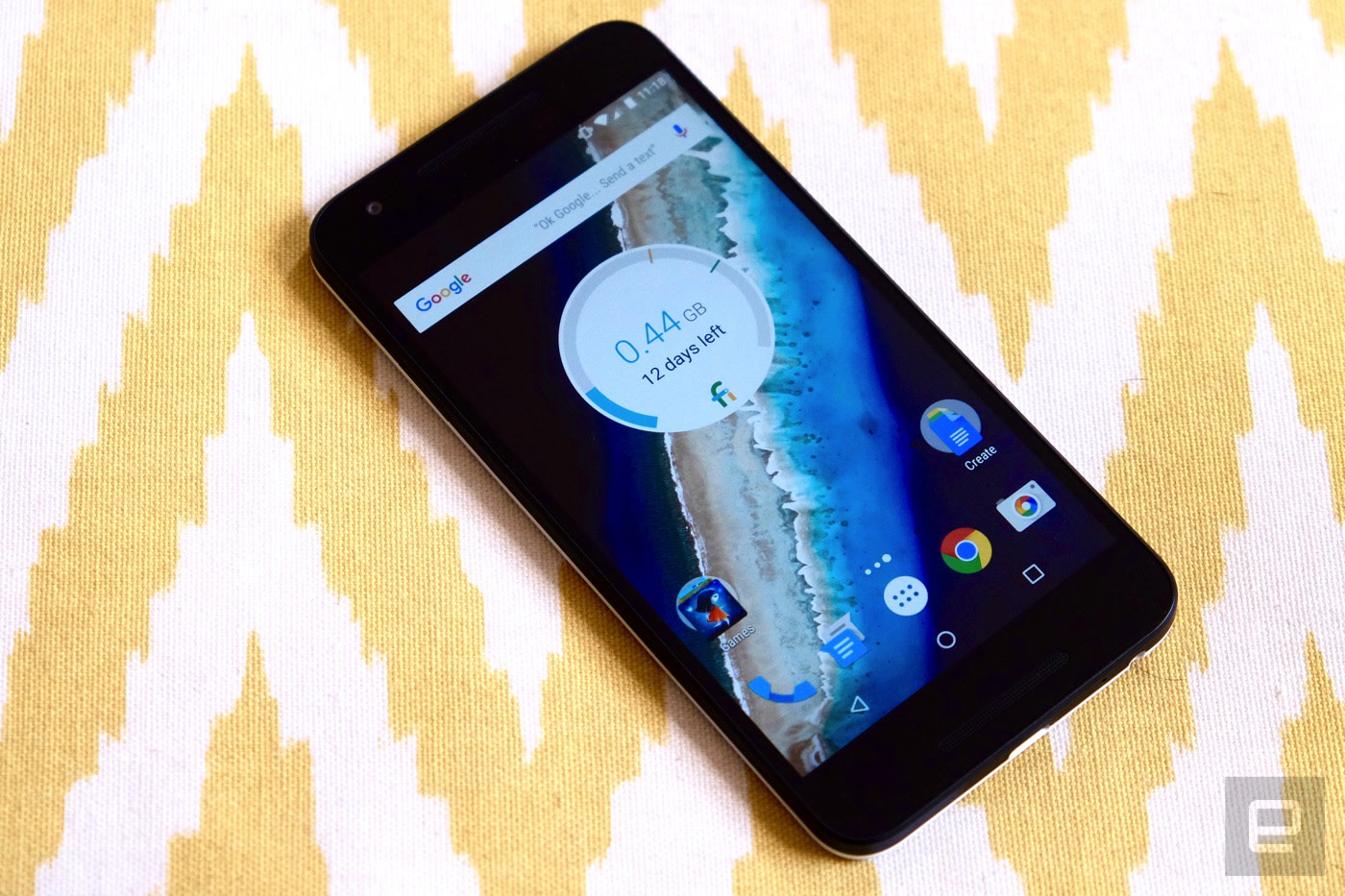If you don’t use a ton of data, Google’s Project Fi (a cell phone service that jumps between Sprint, T-Mobile and US Cellular, depending on signal strength) is one of the better deals in wireless. Now, Google’s making it a bit easier and cheaper to use if you have a family: the company is rolling out group plans starting today. If you’re a Project Fi user, you can add up to six total people to your plan. Each additional user costs $15 per month for unlimited talk and text, down from the $20 Project Fi charges when starting up service on your own. Data stays at the same $10 per GB rate that Fi has always offered.
As before, you only get charged for what you use: if you have 10GB of data on your plan, that’ll add $100 a month to your bill in addition to the charges for each line. But if you only use 8GB, you’ll get $20 back on your next bill. And if you go over by 500MB, Google adds $5 to your bill.
Project Fi’s group plans include safeguards to keep your data usage under control, also. You can set different alerts and caps for your group members — so if you only want your kids using 2GB of data a month, it’ll shut them down after that point, for example.
It’s hard to compare Project Fi’s costs to other carriers because no one else really offers a plan like this, but things could get expensive quick if you use a lot of data. But no other carrier offers you money back for unused data, and there’s a lot to like about Project Fi beyond that — there’s no contract, and group members can be added or dropped at any time. That same reasonable data rate applies in dozens of international locations. If you’ve ever tried to take a phone abroad using Verizon or AT&T, Fi can be a godsend.
Perhaps the biggest drawback to Project Fi is that it only works with three phones: the brand-new Pixel series, the Nexus 5X and the Nexus 6P. To make starting out with Fi a little less expensive, Google is offering discounts on the 5X and 6P: the 6P now starts at $399. The Nexus 5X still costs $199, the same price Project Fi has offered it at for a while now. And it’s about time Google slash the price on the 6P, given that it’s a year old now with a shiny new successor out in the field.
If you’re a Project Fi user and want to add members to your group plan, the feature is live today. You can add users by visiting your Project Fi account page online.
(27)

